第93章 INDIAN MYTHS OF THE ORIGIN OF THE WORLD AND OF MAN
In much the same way the Satapatha Brahmana represents mammals as the last result of a series of creative experiments. "Prajapati created living beings, which perished for want of food. Birds and serpents perished thus. Prajapati reflected, 'How is it that my creatures perish after having been formed?' He perceived this:
'They perish from want of food'. In his own presence he caused milk to be supplied to breasts. He created living beings, which, resorting to the breasts, were thus preserved. These are the creatures which did not perish." This myth is found in Popol Vuh. A Chinook myth of the same sort, Bancroft, v. 95.
ii. 5, 11; Muir, 2nd edit., i. 70.
The common myth which derives the world from a great egg--the myth perhaps most familiar in its Finnish shape--is found in the Satapatha Brahmana. "In the beginning this universe was waters, nothing but waters. The waters desired: 'How can we be reproduced?' So saying, they toiled, they performed austerity.
While they were performing austerity, a golden egg came into existence. It then became a year. . . . From it in a year a man came into existence, who was Prajapati. . . . He conceived progeny in himself; with his mouth he created the gods." According to another text, "Prajapati took the form of a tortoise". The tortoise is the same as Aditya.
xi. 1, 6, 1; Muir, Journal of Royal Asiatic Society, 1863.
Satapatha Brahmana, vii. 4, 3, 5.
Aitareya Brahmana, iii. 34 (11, 219), a very discreditable origin of species.
It is now time to examine the Aryan shape of the widely spread myth about the marriage of heaven and earth, and the fortunes of their children. We have already seen that in New Zealand heaven and earth were regarded as real persons, of bodily parts and passions, united in a secular embrace. We shall apply the same explanation to the Greek myth of Gaea and of the mutilation of Cronus. In India, Dyaus (heaven) answers to the Greek Uranus and the Maori Rangi, while Prithivi (earth) is the Greek Gaea, the Maori Papa.
In the Veda, heaven and earth are constantly styled "parents";
but this we might regard as a mere metaphorical expression, still common in poetry. A passage of the Aitareya Brahmana, however, retains the old conception, in which there was nothing metaphorical at all. These two worlds, heaven and earth, were once joined.
Subsequently they were separated (according to one account, by Indra, who thus plays the part of Cronus and of Tane Mahuta).
"Heaven and earth," says Dr. Muir, "are regarded as the parents not only of men, but of the gods also, as appears from the various texts where they are designated by the epithet Devapatre, 'having gods for their children'." By men in an early stage of thought this myth was accepted along with others in which heaven and earth were regarded as objects created by one of their own children, as by Indra, who "stretched them out like a hide," who, like Atlas, "sustains and upholds them" or, again, Tvashtri, the divine smith, wrought them by his craft; or, once more, heaven and earth sprung from the head and feet of Purusha. In short, if any one wished to give an example of that recklessness of orthodoxy or consistency which is the mark of early myth, he could find no better example than the Indian legends of the origin of things.
Perhaps there is not one of the myths current among the lower races which has not its counterpart in the Indian Brahmanas. It has been enough for us to give a selection of examples.
Muir, v. 22.
iv. 27; Haug, ii. 308.
Rig-Veda, viii. 6, 5.
Ibid., iii. 32, 8.